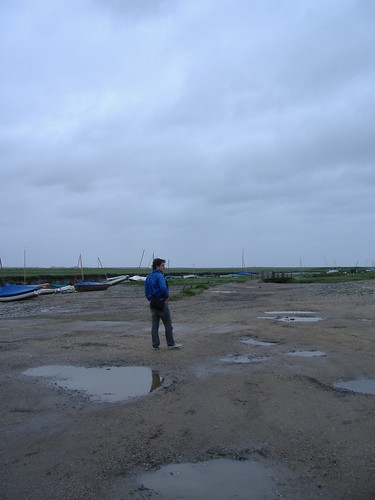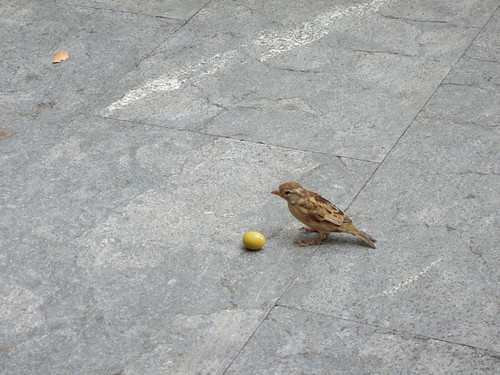
Ödön Márffy, Last Portrait of Csinszka, c.1934
There was no music in the Imperial Panorama - in contrast to films, where music makes traveling so soporific. But there was a small, genuinely disturbing effect which seemed to me superior. This was the ringing of a little bell which sounded a few seconds before each picture moved off with a jolt, in order to make way first for an empty space and then for the next image. And every time it rang, the mountains with their humble foothills, the cities with their mirror-bright windows, the railroad stations with their clouds of dirty yellow smoke, the vineyards down to the smallest leaf, were suffused with the ache of departure. I formed the conviction that it was impossible to exhaust the splendours of the scene at just one sitting . Hence my intention (which I never realised) of coming by again the following day. Before I could make up my mind, however, the entire apparatus, from which I was separated by a wooden railing, would begin to tremble, the picture would sway within its little frame and then immediately trundle off to the left, as I looked on.
Walter Benjamin, Berlin Childhood around 1900
I always stop - always stopped, let's face it - in front of Csinszka in the Hungarian National Gallery on Castle Hill. Something in the picture declines the solicitations of its viewer, which has at points seemed to me to offer a sturdy metaphor about the repetitively-mythologised inscrutability of Hungary to foreigners. As I've maintained throughout my stay here, however, isn't that inscrutability itself a kind of representation or wishful thinking? Is it perhaps convenient for the European imagination to have at the very heart of the continent a country and people elusive to the systematising narratives about culture which we use to make sense of ourselves, with political and linguistic geography figurating the big story about identity - the one in which we are never entirely coincidental with ourselves - that Freud gradually cultivated from folk tales and the recollected dreams of the bored bourgeois in nearby Vienna?
Last Portrait of Csinszka itself accomodates multiple epistemological blocs. With disconcerting forthrightness, the painting is segregated into differing, not necessarily antagonistic, planes of mimetic assurance. Although her own attention is plainly directed into the ether, Csinszka is the most worldly point in the composition; the childishly careless window around her the second (the painting is thus framed as liminal); the looming, Kafkan lover the third. He is styled allegorically, as the gatecrasher of idle thoughts, perhaps, or the history that ushers you away - much too quickly - when you're not looking. If he offers protection, he doesn't supplement it with comfort, and the awkward affection of his gesture is certainly not reciprocated. He might be a ghost, the trace of the past in the present, were it not for his oddly futuristic, and indeed oddly Futurist, appearance, which reminds me for some reason of the cyborgs in Rex Warner's 1941 novel The Aerodrome, an outstanding British depiction of the co-option of ultramodern technologies by the Nazis. Extrapolating a little, it's possible to make the observation that the man who drapes his misshapen arm over Csinszka synthesises the awful realities of the 1930s with the completely inconceivable character of history in that period, and that the titular figure synthesises the awful plausibility of wishful thought. In times of crisis, what we long for acquires a specious density, while what we experience is 'like a bad dream'.
Throughout the 1930s, Elizabeth Bowen was writing novels overrun with characters who conspire against historicity only to be ground down by its very relentlessness, so it's strange that her dustjackets are often decorated with pictures of women who flawlessly resemble, both in attire and dysphoric posture, the one Márffy depicts here. Last Portrait of Csinszka is a characteristically Thirties performance of an inversion of mimetic order, by which the least 'realistic' elements of the composition are precisely those which invite the real world into it, that Bowen's novels hint at in the implausible swastika-shaped house in The Heat of the Day or the demonic, unearthly Markie in To the North. Perhaps the best point of comparison here, though, is Antal Szerb's novel Journey by Moonlight, one of the great finds of my spell in Budapest, which maintains an absolute, unstratified simultaneity of register by fusing a massively subjectivised fugue time with intimations of a broader history giddy with its own velocity.
Throughout the 1930s, Elizabeth Bowen was writing novels overrun with characters who conspire against historicity only to be ground down by its very relentlessness, so it's strange that her dustjackets are often decorated with pictures of women who flawlessly resemble, both in attire and dysphoric posture, the one Márffy depicts here. Last Portrait of Csinszka is a characteristically Thirties performance of an inversion of mimetic order, by which the least 'realistic' elements of the composition are precisely those which invite the real world into it, that Bowen's novels hint at in the implausible swastika-shaped house in The Heat of the Day or the demonic, unearthly Markie in To the North. Perhaps the best point of comparison here, though, is Antal Szerb's novel Journey by Moonlight, one of the great finds of my spell in Budapest, which maintains an absolute, unstratified simultaneity of register by fusing a massively subjectivised fugue time with intimations of a broader history giddy with its own velocity.



4 comments:
This is beautiful!!
Aww, thanks. It's taken long enough - first in a long-running series, I hope.
Love you
xxx
Brilliant post.
Thanks, man. Jenny and I are in London for a conference on Monday October 12th, but we'll be in town the day before as well if you fancy coffee/ a pint. I'll tell Jon as well.
Jx
Post a Comment